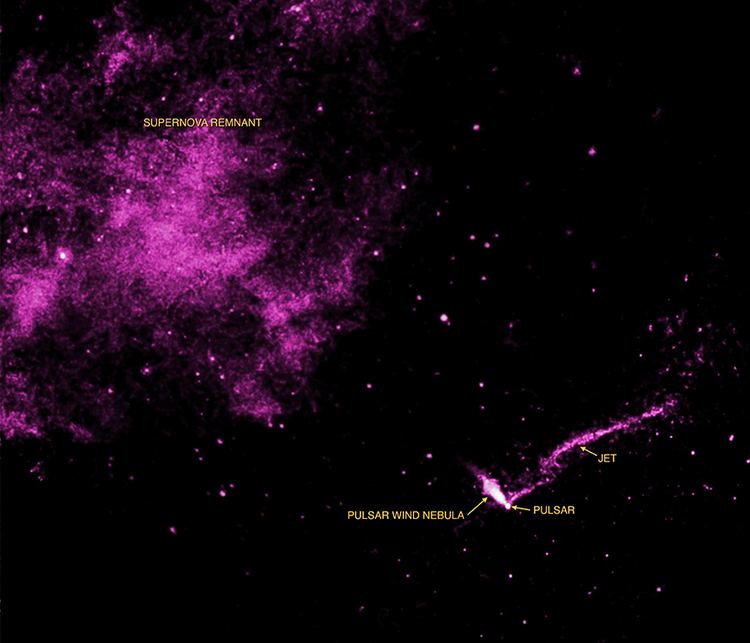 | ||
IGR J11014-6103, also called the Lighthouse Nebula is a pulsar wind nebula, that has the largest relativistic jet observed in the Milky Way galaxy.
Description
This relativistic helical jet and its source are not obscured by explosion debris or accretion material. This jet is observed in x-rays and has no detected radio signature. Numbers in this paragraph are tentative. In the composite processed image the neutron star pulsar is the point-like object with a pulsar wind nebula tail trailing behind it for about 3 light years. The jet, aligned with the pulsar rotation axis, is perpendicular to the pulsar's trajectory and extends out over 37 light years (about 10 times the distance from our sun to the nearest visible star). This distance is quite impressive considering estimates suggest the star's radius is only 12-km, and illustrates the power of relativistic jets. The estimated velocity of this jet is 0.8c. In the image the high speed runaway pulsar was created and ejected about 10 – 30 thousand years prior from a supernova explosion which created the supernova remnant. The pulsar is shown about 60 light years from the original supernova location. The pulsar's speed is reported between 0.003 – 0.008c; faster than almost all runaway neutron stars. This pulsar is not listed in the latest revision of Accreting Millisecond X-Ray Pulsars (AMXPs) and no accretion material has been detected. This star was presumed to be rapidly spinning but later measurements indicate the spin rate is only 15.9 Hz. This rather slow spin rate and the lack of accretion material suggest the jet is neither rotation nor accretion powered. A counter-jet (not shown in the image) has been significantly confirmed but may be difficult to detect due to relativistic beaming. The glitch at about 1/3 the jet length is presently unexplained but might be due to the jet switching off and on or the jet orientation changing. Accurate mass measurements for this star might not be possible and temperature estimates are not yet available. Other neutron stars have been observed to have extremely high velocity jets.
